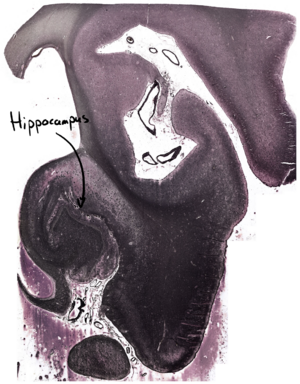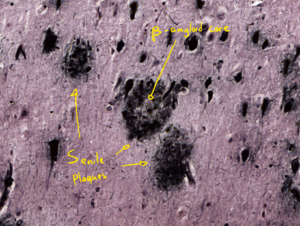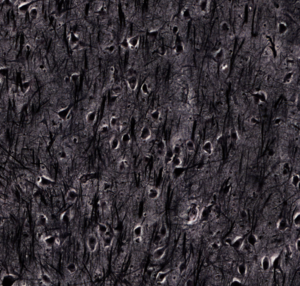23. Senile plaques and neurofibrillar degeneration

Staining: Silver stain (Bielschowsky)
Organ: Brain, hippocampus
Description:
The hippocampus is visible and that’s where the characteristic findings are visible on this slide.
Senile plaques are extracellular deposits of β-amyloid that are surrounded by silver-positive proteins. The amyloids themselves aren’t stained by silver and are therefore pale. These plaques are therefore visible as large black foci with a pale core.
Neurofibrillary tangles are intracellular bundles of hyperphosphorylated tau. These tangles are stained by silver and causes the neurons to be stained black.
Diagnosis: Alzheimer disease (senile plaques, neurofibrillary tangles)

Risk factors:
- Genetic factors
- Down syndrome
- Lack of physical activity
- Traumatic brain injury
- Old age
Theory:
Alzheimer’s disease most commonly affects the hippocampus first, and then the frontal and temporal lobes before it becomes a diffuse process.
This slide is overstained, so the characteristic findings are therefore hard to distinguish from background noise.

